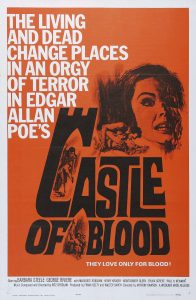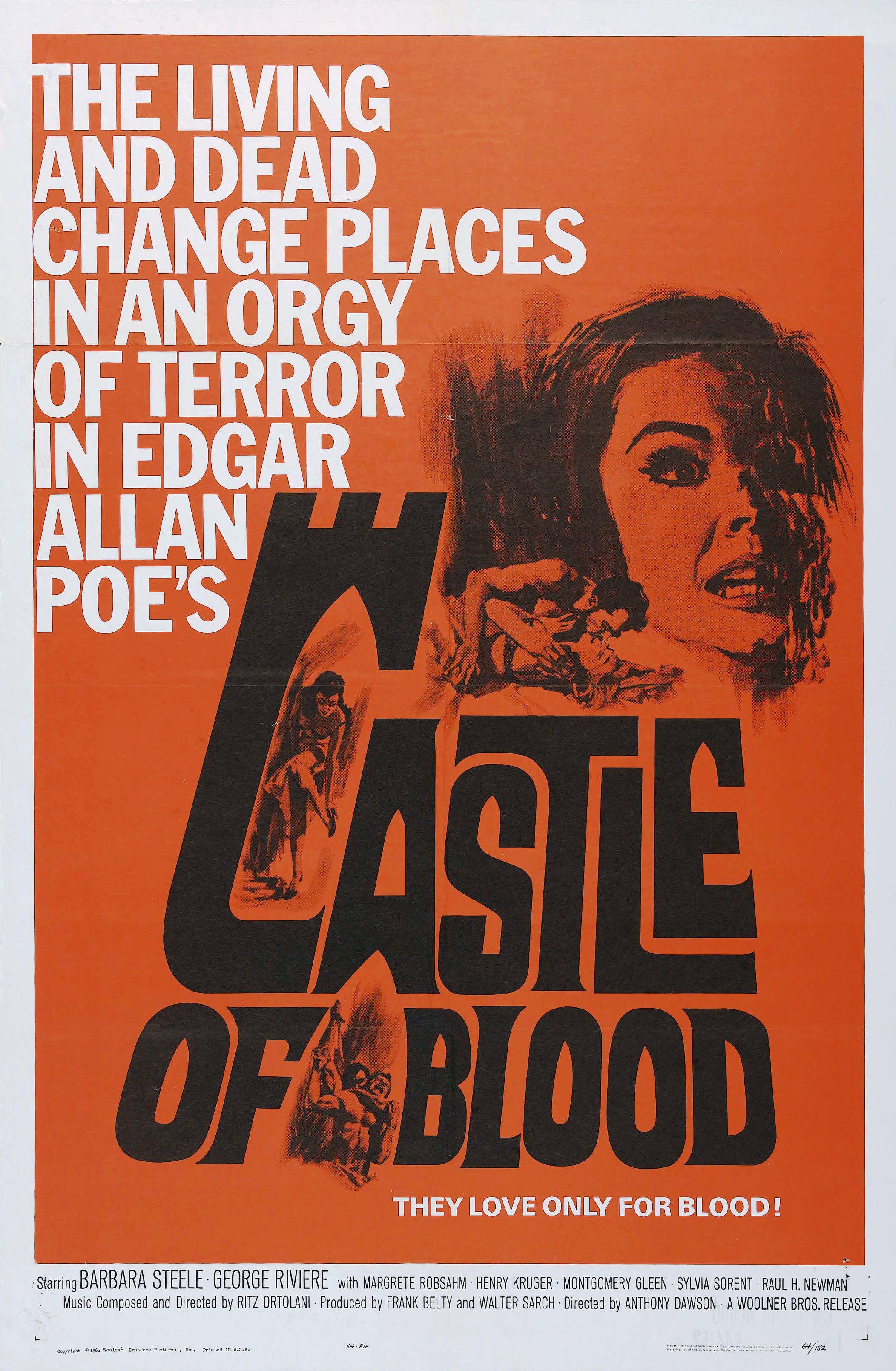
The premise is hardly an original one and the pace is quite slow at times, but my attention was held throughout the film’s entire duration. The opening sequence in a tavern reminded me of a similar scene in Jean Epstein’s silent version of THE FALL OF THE HOUSE OF USHER (1928). Two other scenes later on were also reminiscent of THE CITY OF THE DEAD (1960): the ballroom crowd materializing out of nowhere, and the famous scene where a snake is decapitated is similar in a way to Christopher Lee’s ritual killing of a parrot in the earlier film. Also, when the muscle-bound gardener attacks the newly-wed in her room, we are reminded of a similar scene between Boris Karloff and Mae Clarke in FRANKENSTEIN (1931). Then again, CASTLE OF BLOOD looks forward to THE ASPHYX (1972) in their common argument about a person or thing not giving up on life unless he or it is prepared to die.
The film evokes a great atmosphere, considering that budget and shooting schedule must have been pretty tight: smooth and interesting camera-work (particularly some tilted shots used for disorienting effect), expressive shadowy lighting and the expansive yet claustrophobic sets, all of which are beautifully complemented by a fine and eclectic score by Riz Ortolani.
There are several other qualities that elevate the film rightfully to its renowned place in the pantheon of Italian horror, not least of all is the presence of two highly attractive ladies – Barbara Steele and Margarete Robsahm. Steele effectively alternates between vulnerability and aggressiveness – thus building upon her dual roles in BLACK Sunday (1960) – by giving her character a sense of inner conflict (her willingness to die at the end rather than have to repeat the castle’s ‘night of terror’ ordeal over and over), though her thunder here is often stolen by Robsahm who manages an admirable subtlety in her (relatively) brief and enigmatic appearance. Arturo Dominici, as well, is suitably imposing as the helpful but wily Dr. Carmus. Another noteworthy aspect is the film’s portrayal of a world-weary Edgar Allan Poe in the guise of Silvano Tranquilli, who captures the famed but tormented writer’s essence quite well (even with his limited screentime).
Often missing in previous versions of the film is the lesbian subtext – introduced rather too abruptly into the story, but sensitively handled by the two actresses (especially in view of its shooting conditions!). On the other hand, a couple of gratuitous topless shots add nothing to the film and could easily have been avoided (though it appears these were intended for Continental versions only, much like the unnecessary striptease sequence in DEVIL DOLL [1964]). I am also baffled by a couple of other points: what exactly did Elizabeth die of? We see the gardener stab her, but at the end of the film she perishes beside her own grave in the cemetery! And can anyone explain those hanging bodies which Alan Foster (Georges Riviere’s character) passes by immediately afterwards, as he stumbles outside the castle grounds?
Where the film comes up short is in the stilted dialogue of the romantic interludes – if the Barbara Steele/John Richardson relationship in BLACK Sunday comes off as unconvincing, what about the Steele/Riviere match here? In fact, both young male leads are a detriment to the film: the he-man gardener character, especially, is laughable and breaks the mood of the piece, taking one out of the picture! Apart from this, couldn’t they have picked one of the women to ‘vampirize’ successive victims?!

